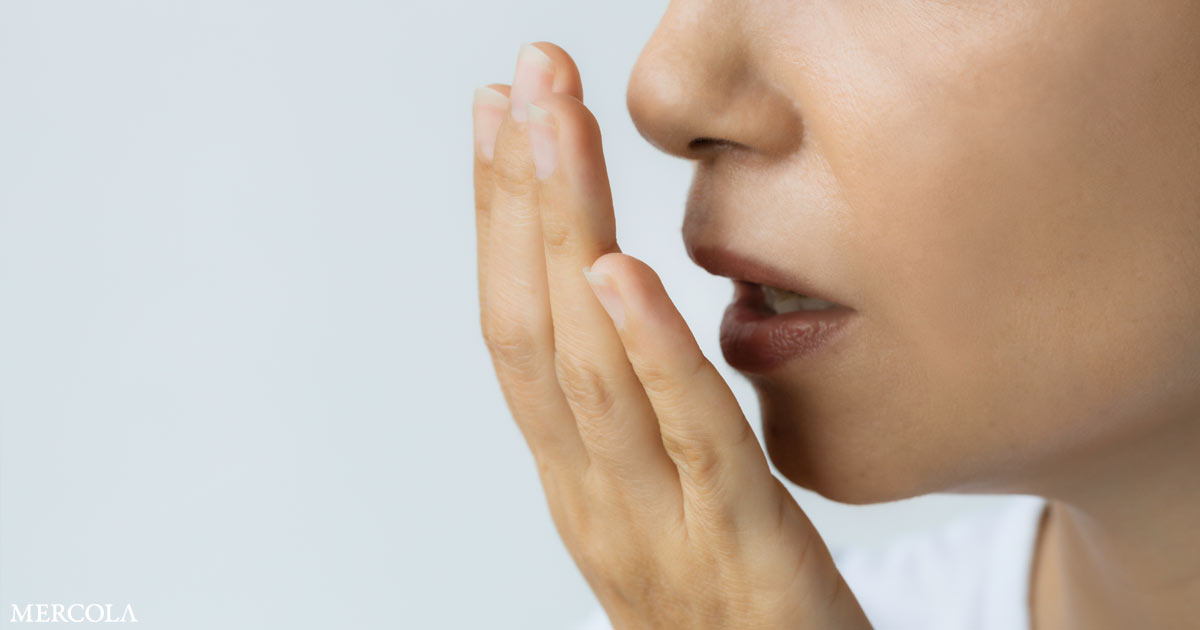
[ad_1]
Pot. Hemp. Weed. Grass. Marijuana. Cannabis goes by many names. Should we also be calling it medicine?
Research shows that approximately 25% of people with a cancer diagnosis use medical cannabis to manage cancer-related symptoms. And many more may wonder if medical cannabis could be a good addition to their cancer treatment plan. But people have questions about cannabis safety, effectiveness, how to access it and more – and they aren’t sure where to find answers.
“Up to this point, the use of cannabis in cancer care has been patient trial and error,” said Dr. Dylan Zylla, medical director of the HealthPartners Institute Cancer Research Center. “They’re also getting information from the internet, friends and family. This all puts a lot of responsibility on the patient when they don’t have a medical background, or experience in pharmacology and dosing. This is not the way it should be – and it’s certainly not how we practice the rest of medicine.”
This is where Dr. Zylla – who’s an oncologist – along with clinicians and researchers aim to make a difference.
With his help, we answer some of the most common questions about what medical cannabis is, what we know about its potential benefits for cancer patients and more. Plus, we’ll show you how Dr. Zylla and his team are working to further research, while also providing interested patients with medical guidance to use cannabis safely and effectively as part of their cancer treatment plan.
First things first, what is medical cannabis?
Simply put, medical cannabis can be the whole plant or certain parts extracted from Cannabis sativa (the same plant commonly known as marijuana, weed or pot). These products are used to treat specific medical conditions. Depending on where you live, medical cannabis may or may not be legal, or your options may be limited.
What are the types of medical cannabis products?
When you think of cannabis, you probably think of the dried flower that can be smoked or inhaled through a vaporizer. But that’s not the type of medical cannabis that’s usually used to help manage cancer-related symptoms. Instead, most people use products such as pills, oils and topical creams made with cannabinoid extracts.
What are cannabinoids?
Cannabinoids are chemicals that naturally occur in cannabis. There are two main cannabinoids that give cannabis its therapeutic effect.
- Tetrahydrocannabinol (THC) – This is the psychoactive ingredient in cannabis that makes someone feel high. But it can help improve nausea, pain, appetite loss and insomnia.
- Cannabidiol (CBD) – This chemical doesn’t give you a high and it’s not addictive or intoxicating. But it can make you feel more comfortable and lessen your pain.
Manufactured cannabis products can have one or both chemicals – whole flower always contains both.
Is there a difference between medical cannabis and recreational cannabis?
If you use recreational cannabis to treat your cancer, does it automatically become medical cannabis? From a medical and legal perspective, there are some key differences between recreational and medical marijuana.
Legal status
The legality of cannabis, THC and CBD is complex and depends on what, where and why cannabis is being used. Here are the influencing factors:
- Federal and state laws – U.S. federal law prohibits the use of marijuana. But many states have made medical cannabis legal, and some have also legalized recreational marijuana. Federal drug law exists separately from state law.
- Available products – Even if medical cannabis is legal in a state, the choice of medical cannabis products can vary widely. For example, in Minnesota, both extraction products and whole flower are available for certified patients. In Wisconsin and Iowa, only CBD oil is allowed as medical cannabis.
- Drug approval status – The U.S. Food and Drug Administration (FDA) has not approved cannabis or naturally derived cannabinoids for cancer care. The FDA has approved a synthetic THC medication that can be used even when medical cannabis is not allowed under state law. However, these medications are not well tolerated by most people and can cause severe side effects in some people. So, they’re rarely prescribed.
- Retail CBD and THC products – To make things even more confusing, CBD products have been sold online and at retail stores nationwide as supplements – as long as they have less than 0.3% THC. But that’s changing in some places. For example, in July 2022 Minnesota passed a new law allowing edible products containing up to 5mg of THC per serving, as long as the products were originally derived from hemp plants.
Where you buy it
Every state oversees medical cannabis a little differently. But in Minnesota, for example, medical cannabis is only available at dispensaries regulated by the Minnesota Department of Health. Over-the-counter CBD and THC products are available in retail storefronts or office buildings.
Product quality
In many states, medical cannabis dispensaries are required, by law, to have an independent, third-party lab test their products to prove that they are free from impurities such as mold, heavy metals and residual solvents. These labs also verify that the reported percentages of THC and CBD are accurate.
Who can purchase it
Every state has different requirements for purchasing medical cannabis. For example, in Minnesota patients need to be certified by a clinician who is managing their medical condition or symptoms. This clinician is usually someone from oncology, primary care or palliative care. Patients also need to register with their state’s cannabis program. The annual fee for registering can be up to $250 or more, depending on your state.
Why is medical cannabis becoming more accepted as part of a treatment plan for cancer and other conditions? Research.
Cannabis has been used in alternative medicine for centuries, but it has only recently entered the modern health care world.
“I’d say that it’s really only within the last 20 years that researchers have been looking at medical cannabis for improving symptoms such as nausea, loss of appetite and pain,” said Dr. Zylla. “There’s significant data showing the impact cannabis can have on quality of life in patients with cancer.”
While more studies are needed on the benefits of medical marijuana, particularly its specific benefits as a cancer treatment, there’s a growing amount of data supporting its medicinal properties. Right now, research supporting the medical use of cannabinoids includes over 20 completed clinical trials with more on the way.
While that may not seem like a lot, 10 of these studies are randomized controlled trials – the type of studies considered to be the gold standard in clinical research.
In these studies, one group receives the treatment (the treatment group) while another group does not (the control group) – and patients don’t know which they’re in. This approach helps to prove if the benefits of a specific treatment are both meaningful and real.
What is the big benefit of using medical cannabis for cancer? Symptom management.
Research shows that incorporating medical cannabis into a treatment plan can help improve a patient’s symptoms, making coping with cancer treatment easier.
Dr. Zylla has led groundbreaking studies, along with researchers from HealthPartners Institute, University of Minnesota and Minnesota Department of Health. One study followed patients with stage IV cancer using cannabis over a four-month period, and found that cannabis use resulted in significant improvement in:
- Chemotherapy-induced nausea and vomiting
- Depression
- Disturbed sleep
- Fatigue
- Lack of appetite
- Pain
Can cannabis reduce the need for opioids for pain management? It’s possible.
As we learn more about the dangers of opioids and opioid addiction, there’s an interest in safer alternatives. And it appears that cannabis is an option to reduce the negative side effects of opioids while keeping pain under control.
Large studies show 36% of people with cancer no longer use opioids while on medical cannabis, and another 10% can reduce the amount they use. Similarly, in the Cannabis in Cancer (CanCan) trial conducted at HealthPartners, patients using cannabis appeared to require less opioids.
Medical cannabis in practice: Ensuring patient benefit and safety
While cannabis may be effective, the other part of the equation is safety. Are there risks in using medical cannabis as part of your cancer treatment plan?
The truth is that cannabis isn’t for everyone. As with any treatment, there are guidelines in place to ensure that it’s used appropriately and safely.
State rules for medical cannabis
To use medical cannabis, patients need to qualify based on state laws. In Minnesota, people over the age of 18 who are experiencing symptoms related to their cancer or cancer treatment, can qualify for medical cannabis if they have one or more of the following:
- Severe or chronic pain
- Nausea and severe vomiting
- Severe muscle or weight loss
Medical cannabis can be used for any type of cancer, but primarily cancer that’s more advanced. Other qualifying conditions for medical cannabis in Minnesota include chronic pain, post-traumatic stress disorder, epilepsy, severe or persistent muscle spasms, and sleep apnea.
“In Minnesota, about 75% of people who use medical cannabis for their cancer are over 50 years old,” Dr. Zylla said. “At HealthPartners specifically, patients who use cannabis often have stage IV cancer of the breast, lung, colon or pancreas.”
Cannabis and other cancer treatments
Research is ongoing to understand how cannabis interacts with other cancer treatments. But here’s what we already know:
- Chemotherapy– Cannabis is generally viewed as a safe addition to the types of chemotherapy delivered through a vein in your arm, and is shown to reduce the nausea and appetite loss that often comes with this type of therapy.
- Targeted therapies– If a patient is on a targeted medication, clinicians need to check for potential drug interactions with cannabis. Targeted medications are typically processed through the liver and researchers are still learning how cannabis affects liver function.
- Immunotherapy– Immunotherapy is one of the most promising areas being researched in cancer clinical trials. But cannabis can impact your immune system and has anti-inflammatory effects, both of which can make immunotherapy less effective. So if you’re on an immunotherapy, it may not be a good idea to use cannabis.
Patient health factors
Before considering medical cannabis as part of a patient’s treatment plan, doctors evaluate other health factors as well. Medical cannabis may not be a good choice for people who have:
- Problems related to their heart, lungs, liver or kidneys
- A history of substance abuse or psychiatric disorder
- A family history of schizophrenia
- Hypersensitivity to cannabinoids
Dosing
People usually think the benefits of cannabis outweigh any negatives, but some people experience nausea related to the smell, as well as headaches, anxiety and difficulty sleeping. Proper dosing can help minimize the downsides of medical cannabis while allowing people to get the most benefit.
“We use a ‘start low and slow’ approach,” said Dr. Zylla. “The dosing is very different for everybody, so we take time to get it right.”
Part of the process is choosing the right combination of products to best manage a patient’s unique symptoms.
“We often use a balanced product – such as a product with a one-to-one ratio of THC and CBD – but it depends on a patient’s symptoms,” said Dr. Zylla. “CBD balances some of the ‘high’ feeling and some of the negative side effects, but higher THC is helpful for pain, nausea and sleep.”
What is the cost of prescription cannabis?
The only type of “cannabis” that insurance companies can cover is synthetic THC medications approved by the FDA. This limit is because cannabis is still illegal at the federal level – even though some states have made it legal.
As an out-of-pocket cost, medical cannabis can put a significant dent in a wallet – on average, a patient spends about $3,000 on cannabis per year when managing chronic noncancer pain. For example, a report on medical cannabis pricing in Minnesota found the average monthly spend on cannabis by patients with cancer was $236. And for many people, this price is too high.
“Of the patients who completed the CanCan clinical trial, 44% planned on purchasing cannabis through the state program,” Dr. Zylla said. “For people who didn’t plan to continue using cannabis, cost was the biggest barrier to ongoing use.”
At HealthPartners, we’re serious about making health care more affordable and we believe there are things we can do to balance cost with effectiveness –including the choice of medication and how much is used. This mindset applies to cannabis, too.
“Most people can tolerate higher doses of cannabis to better manage their symptoms,” said Dr. Zylla. “But there’s the cost issue. Our goal is to create cannabis treatment plans that use products at the lowest dose possible to help minimize both cost and potential side effects.”
Minnesota’s CanCARE clinic: Helping patients understand medical cannabis options
At HealthPartners, we want to provide the best possible care and access to the latest treatment options. These are core to our purpose as an organization, as we strive to be a partner for good℠ to our patients and the communities we serve.
With that in mind, Dr. Zylla led the development of the HealthPartners’ Cannabis in Cancer Research and Education (CanCARE) clinic in Minnesota. The clinic is both for patients considering using medical cannabis and current users who would like guidance in managing their cancer symptoms.
“We offer education on how to safely use cannabis and provide dosing guidance to do it successfully – and ideally, cost-effectively,” said. Dr. Zylla. “We help ensure they’re not using products that aren’t going to make any difference or using too much.”
The CanCARE clinic is seeing great results, with a high patient satisfaction rate – 96% of patients said they would recommend the clinic and 95% said they learned more about cancer and cannabis during their visit.
The reason for these great results?
“I think it just comes down to them feeling more educated and more confident in what they’re going to get out of cannabis,” said. Dr. Zylla.
[ad_2]
Source link





No comment yet, add your voice below!